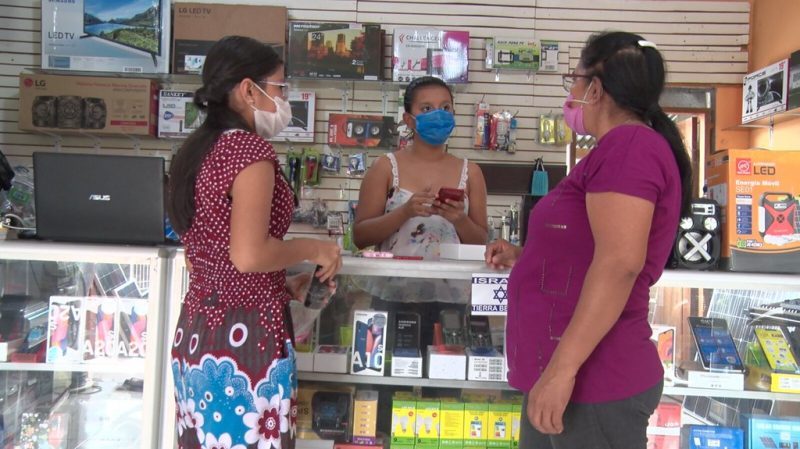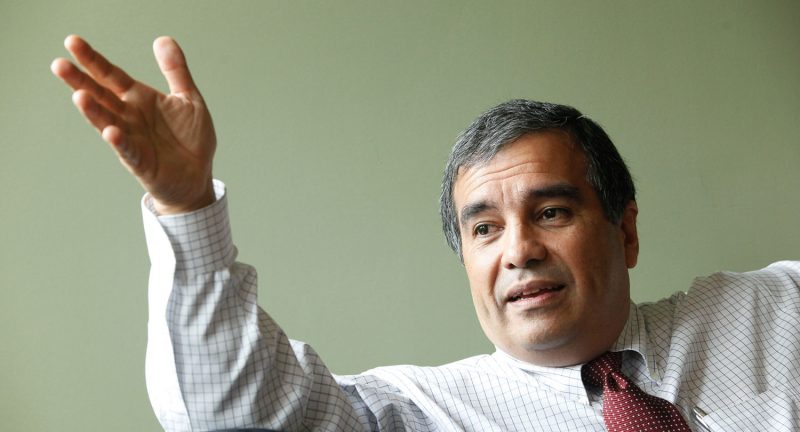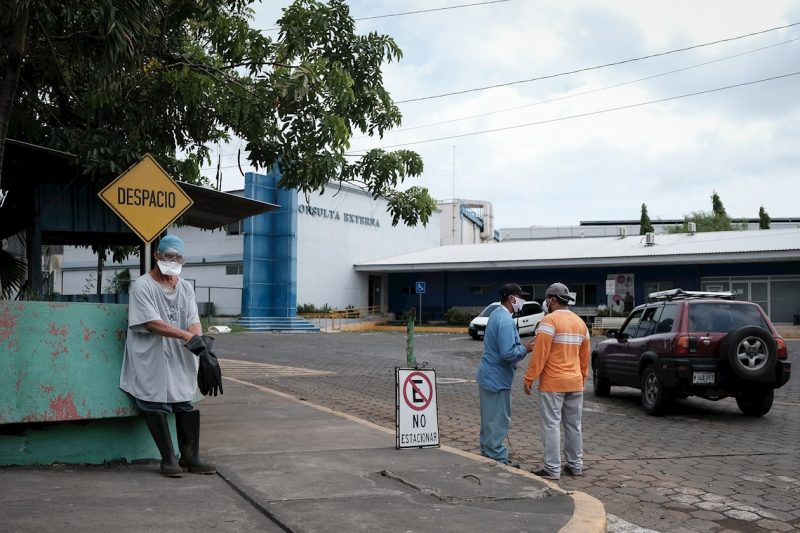Business School President Warns: “Nicaragua Needs 2,000 Tests Daily for Covid-19”

By Yader Luna (Confidencial)
HAVANA TIMES – Professor Roberto Artavia, President of the Board of Directors of the Central American Institute of Business Administration (INCAE), believes that Nicaragua must carry out at least 2,000 daily Covid-19 tests in “order to have minimum control” of the pandemic.
In a online conference, the professor gave as an example the case of Guatemala where the epidemiologist Edwin Asturias, who returned to his country to lead the Presidential Commission of Attention to the Covid-19 Emergency (COPRECOVID) has asked the Government to install a capacity to do 160,000 tests per month; that’s to say, 5,333 daily tests in a population of 17 million to “have a reasonable control over the infection rate and the epidemiological link.
In this sense, he stressed that for this to happen in Nicaragua, we must be able to evaluate all cases where suspected symptoms are present with testing, rely on key staff of the health system and have control of the borders, markets and places of crowded gatherings.
Artavia warned that besides these conditions, the capacity of the health system must be maintained, “because when the health system collapses, deaths outside the system begin.”
He stated that “somehow we have seen this in Nicaragua, but there is so much that we do not know of what is really happening officially, that we do not know the magnitude of the problem we have here, at least not with reliable accuracy.”
Information needed
The Government of Daniel Ortega and Rosario Murillo has declared that it will not order a quarantine, nor has it applied the recommendations of the World Health Organization (WHO) that insists on social distancing to protect against the pandemic. On the contrary, Nicaraguan authorities continue to promote massive activities.
In this regard, the INCAE professor notes that “the progress of the pandemic has clearly been significant in recent weeks” and, evidently, “there is a growing fear among the population” faced with “the government’s still contradictory messages of what is happening and what they say to the population.”
“Besides the direct impact of the pandemic, there are other social and economic impacts that could collapse the already very battered Nicaraguan social contract. We do not want people on the street, we do not want a massive explosion that could put the health of most Nicaraguans at real risk, and this is hard enough already in the way that we are experiencing it,” he said.
For this reason, Artavia assures that “social distancing,” which was initially seen as “emergency measures are going to become culture, in more lasting behavior.”
However, he admits that in the face of this scenario, the poor urban areas are going to take “the strongest blow” due to the conditions in which they live, such as overcrowding and lack of hygiene facilities.
On “herd immunity”

The academic feels “the risk of a massive outbreak is a reality” and even in the most optimistic scenario, “there are many months ahead, if not years, for this virus to continue alive in Central American societies and in societies around the world.”
During his conference, he cited the Silicon Valley engineer, Tomas Pueyo, who became a global reference on Covid-19 after the publication of his article “The Hammer and the Dance,” which in a few days was read by tens of thousands of people around the planet and was decisive in the decisions of many governments regarding the pandemic.
Pueyo explains that “at least 60% of the population with immunity is needed, either by vaccination or by contagion, because they have already recovered, so that there is protection of the herd with Covid-19.”
However, he cited some emblematic cases due to massive contagion such as New York where the infection rate is barely 19.9%, London with 17.5% or Madrid with 11.3%, which “are nowhere near having herd immunity, and that is why when opening up, in many cases, there is a new spike, or they are having outbreaks in different regions.”
The death scenarios in Nicaragua
In Nicaragua, the Government acknowledged that Nicaragua is betting on the herd immunity or collective immunity model, when it stated in its “White Paper” on Covid-19 that “Nicaragua is the same example as Sweden, but among the developing countries.” However, that European country admitted flaws in its strategy against the new coronavirus and warned that they should have adopted tougher restrictions to reduce the mortality rate which has been too high.
Artavia stressed that achieving 60% herd immunity “is not a matter of a few weeks, that will possibly take months, and in some cases, we will take eight, ten, fifteen months.”
“To get to herd protection, if that is what we would like to do, and there is an awful decision to make, which is that if we continue in unlimited isolation, if we do not move to herd protection, then we will pay high social costs, economic costs, and we have to take that into account too,” he warned.
Regarding the case of Nicaragua, he pointed out that the spike of infections is still “not over”, because the accumulation of cases “is increasing every day” and will occur in three to six months.
In a “moderate” scenario, the academic believes that one can speak of 620,000 people with Covid-19 and consider a minimum mortality rate of 3.57%.
“If I apply 3.57% to 620,000 (people), we are talking about more than 20,000 who could die by this,” he warned.
He mentioned, based on international studies, that other analysis predicts a case fatality rate of 1%. Based on these numbers, of the 620,000 cases expected in Nicaragua, at least 6,200 people would die.
Although this is less than the 20,000 projected with the other formula, “both are figures that should concern us greatly,” he stressed.
[Nicaragua has a population of around 6.5 million inhabitants.]
Nicaragua’s risk
Artavia also mentioned that in the case of Nicaragua there is an “enormous risk” because we have no control over how the pandemic is being handled, we are doing it voluntarily from civil society, and also, we lack information from the health system.”
“The health system already seems to have collapsed, so these rates tend to be seen as very realistic, instead of being seen as nonsense,” he said.
He regretted that the country continues “without officially ordering a strong and massive closure” of borders and non-essential activities “which suggests that the infection rate could be higher, transmissibility must be higher, and provide even more worrying figures of the speed at which the pandemic is spreading.
Dismissal of doctors in Nicaragua

He noted that in the case of Sweden, a system that the Nicaraguan Government claims to apply, it shows four times more deaths per million inhabitants than Denmark, and 15 times more deaths per million inhabitants than the Czech Republic, 10 times more than Norway.
“Clearly, staying open affects the mortality rate, and we already said that Sweden’s rate is .64, because they have a very robust health system. Imagine living this same situation with a previously collapsed health system, obviously mortality rates are going to be much bigger,” he insisted.
Economic effects of the health crisis
Regarding the effects on the economy, the professor explained that in the case of Latin America a -5% drop in the Gross Domestic Product (GDP) is expected, as a consequence of the global recession caused by the pandemic.
He highlighted that the scenarios that FUNIDES has worked, mainly for Nicaragua, show potential falls in GDP of -6, -10, to -13%.
“Imagine you calling a -6 and a half percent an optimistic scenario. That is horrible, more in the case of Nicaragua, that with the April 2018, conflicts, is already carrying a very complex situation. This, obviously, causes high unemployment rates,” he warned.
He indicated that one could speak of 300,000 unemployed people, “in we assume two dependents for each of the unemployed, we are talking about 1 million people who will directly suffer” the consequences of the global health crisis.





